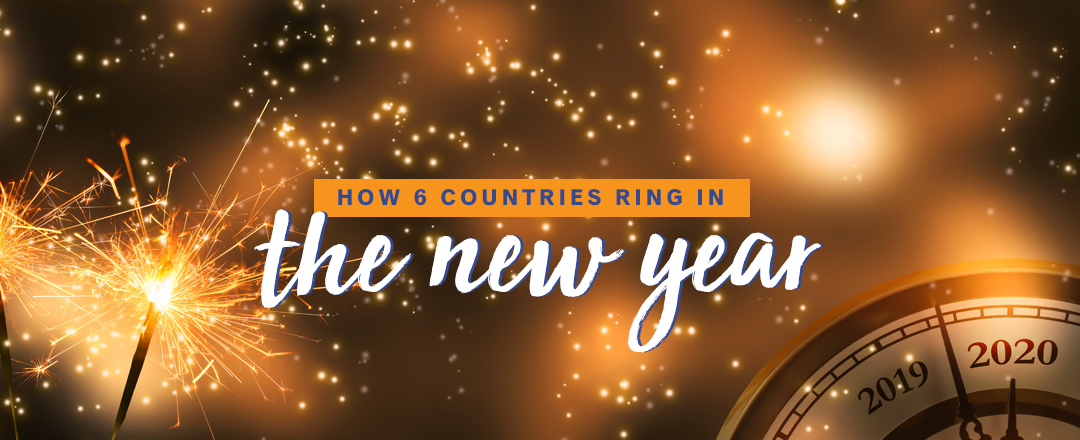Did you know it takes a total of 26 hours for the entire world to enter the new year? That’s what happens when there are more than 30 time zones across the globe! While we might not be celebrating at the same time, we love to see how people and cultures around the globe have their own distinct ways of welcoming the new year. How will you be celebrating the end of the decade?
Denmark
From the start of the year, Danes collect chipped glassware and dishes in anticipation of New Year’s Eve. On December 31st, they gather these pieces and go to the houses of friends and family to smash the chipped items against their front doors. The more shards on your doorstep, the more popular you are! Another popular Danish tradition is jumping off a chair at the stroke of midnight to symbolize leaping into the new year.
Brazil
Brazilians have a couple of New Year’s Eve traditions they take part in to celebrate. Many people eat lentils for dinner on December 31st, meant to bring good fortune for the year ahead since lentils represent money. Another tradition is jumping seven waves: good luck increases for the year if you jump over seven different waves while making New Year’s wishes. Brazilians gather on the beach at midnight for this tradition, dressed in white to bring peace and carrying bouquets into the waves with them as an offering to the goddess of the seas, lemanja.
Japan
Japan will celebrate the new year 14 hours ahead of us in the United States. To ring in the new year, the Japanese head to Buddhist temples. At midnight, they ring the bells 108 times to honor the 108 human sins in Buddhism. This dispels negative emotions and mentalities for the new year. Otoshidama is the Japanese celebration on January 1st, marked by adult relatives giving money to children.
Spain
Nocheviejo, or New Year’s Eve, is celebrated in multiple ways in Spain. One of the biggest traditions is the eating of 12 grapes, which is achieved by eating one grape on every chime of the clock during the last 12 seconds of the year. If you’re successful in eating all of the grapes, it is said you’ll have a year of prosperity. A smaller tradition happens after the midnight celebrations — many in Spain believe that you should start the new year with your right foot, so when you walk away from the festivities, make sure you are stepping on your right foot.
Scotland
Hogmanay is what Scots call New Year’s Eve, and the origins date back to the Vikings’ celebration of the winter solstice. A three-day festival takes over Edinburgh to close out the year, starting on December 30th with a torchlight procession down the historic Royal Mile to Holyrood Park. The Hogmanay Street Party kicks off on December 31st, where residents dance the night away with concerts, fireworks, entertainment, food, and drink. The final day of the festival, January 1st, is when the Loony Dook takes place. It’s the annual splash into the river!
United States
The most popular celebration known in the United States is the party that takes place in New York City. Around 1 million people gather in Times Square to watch the ball drop as they countdown to midnight. This event has been held nearly every year since 1907 (the exception being during WWII). Every year, the event is televised across the country and viewers watch freezing crowds celebrate with noisemakers, themed glasses, and more. On January 1st, many popular parades take place, including the Rose Bowl Parade held in California and the Mummers Parade in Philadelphia.
Explorica wishes you a happy new year full of health, prosperity, and travel!




